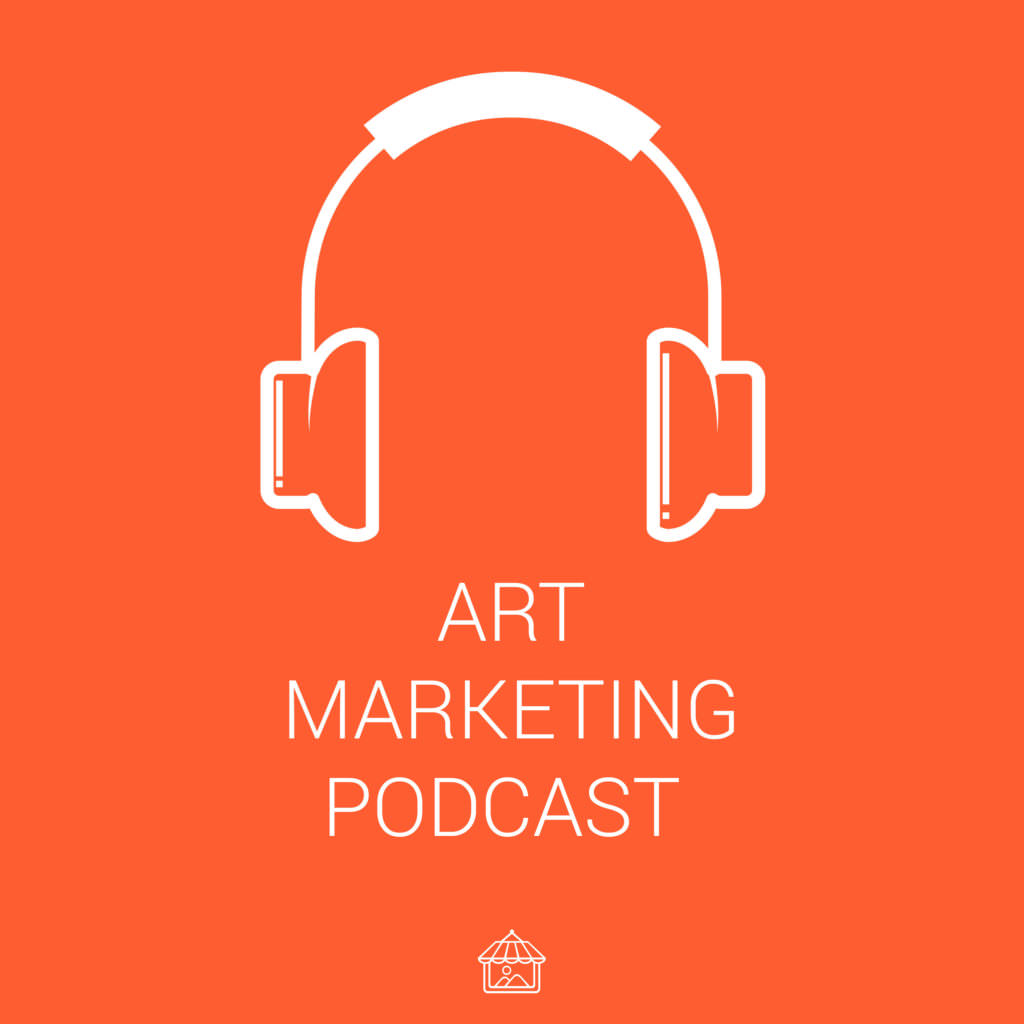Facebook Ads for Photographers and Artists
Where to get started with Facebook and Instagram ads, why it should be a pillar of your art marketing strategy, and how you should actually go about it
Three Artists In An Elevator...
I just got into an elevator with three artists: a painter, a photographer, and a graffiti artist.

Aero and Press Tijuana, Mexico 2001.
- The painter is literally just getting started. Launched his online art business two weeks ago.
- The photographer is super established, she has a huge social following, and has some momentum.
- The graffiti artist has been selling his work online for 20 years.
Turns out all three of them listen to this podcast and they recognize me.
Hey Patrick, we were just having a discussion about FB Ads and selling art. We're all in different places in our careers, but we wanted to ask if you could quickly give us your pitch on how to best approach FB ads.
"No problem," I say. "Good news here is my advice is the exact same for all three of you..."
Let's Get Back Into the Elevator
To answer my new friends in the elevator, big surprise here, I'm starting with an analogy...you ever see Casino? Directed by Scorsese and starring, among others, Robert De Niro?
De Niro has a line in that movie...
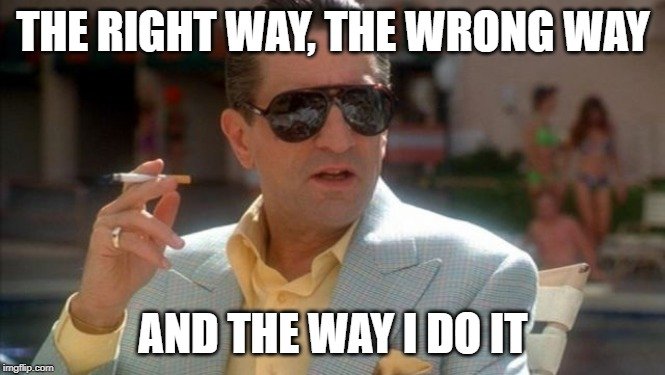
In this case the right way, the wrong, way and the way that I do Facebook and Instagram ads. Let's start by defining them.
The Wrong Way
This is the way 99% of artists and photographers go about it. The way I first went about it in my own career as a marketer.
It's a swan dive into the deep end. You Google around, learn a bit, then start running ads. You immediately go after COLD traffic (i.e.: people who are interacting with you and your work for the first time ever). You put your art or photography up, you optimize for sales, and you put some language in them along on lines of "buy now".
This way sadly is doomed for a number of reasons. These are the two biggest:
- Most don't have the resources or the teaching on just how long it takes to learn Facebook and Instagram ads. As a result, most spend a little bit of $, lose almost all of it, and then quit.
They didn't lose completely by the way, they learned a lesson they paid for, problem is they still have to learn a whole lot more lessons before they completely get it.
BTW – this particular route, in my experience, is the same whether you are the one running them or you bring in a consultant, who is experienced but just does not understand how selling art works. You don't have years + company $ (i.e somebody else's) to play with. Makes it hard to be able to pay for this type of an education. - Facebook is laden with what I lovingly call "idiot taxes." They are spread all over the FB ads experience in a hidden fashion like some sort of sick and twisted game. If you don't learn them and how to avoid them it turns out you pay them and you feel like an idiot about it later when you do learn. Paying them also makes you quit early... see point 1.
There are other reasons, but those are the two biggest as to why artists and photographers fail going this route.
The Right Way
This is the conventional wisdom way.
You have a a product, i.e art, and you want to sell it.
So what is the direct route? You target buyers... i.e cold traffic and you immediately go for the sale.
99% of what is taught out there in FB ads land is this very route. You have a product to sell, that is what you want to achieve, you spend $ on ads and try to sell it. If you put a dollar into the ad marketplace then you want to get $2.00 out lets say.
In this example, "the right way," let's say you know what you are doing with ads, you are fully capable of deftly side-stepping the idiot taxes and, in contrast to the wrong way, you know how long it takes and you are prepared to stay the course. It's gonna go great right?
Sadly, no, not likely... why?
Number of reasons here as well, let me give you a quick few of them and yes I realize this is controversial to say.
Yes I realize this will likely sting a bit.
Yes I realize I am gonna catch some flack for saying this ...
Phew, there I said it.
Let me plead my case then you can decide if you agree or not.
1) It's not really how art is sold.
It's just not. People are not on Facebook or Instagram flipping along with their thumbs, prepared to make impulse style buys of your art. On the couch, watching tv, distracted, see your ad, and pull the trigger on a 24 x 36" $500 print. Not happening.
The relationship analogy applies here. Trying to sell art that way, is like walking up to the guy or gal in the bar, introducing yourself, and asking them if they want to go back to your place.
Ok well what about all of those products that do do this and get an ROI out of cold traffic? You been on Instagram lately? What type of ads are you seeing?
In my feed its been...
- A bidet
- Surf trucks for my skateboard
- A pair of pants you can spill water on
- A yeti style cooler for my beer
- A shirt for athletes that will make non athletes look like athletes
- An iPhone cord holder for the side of my desktop
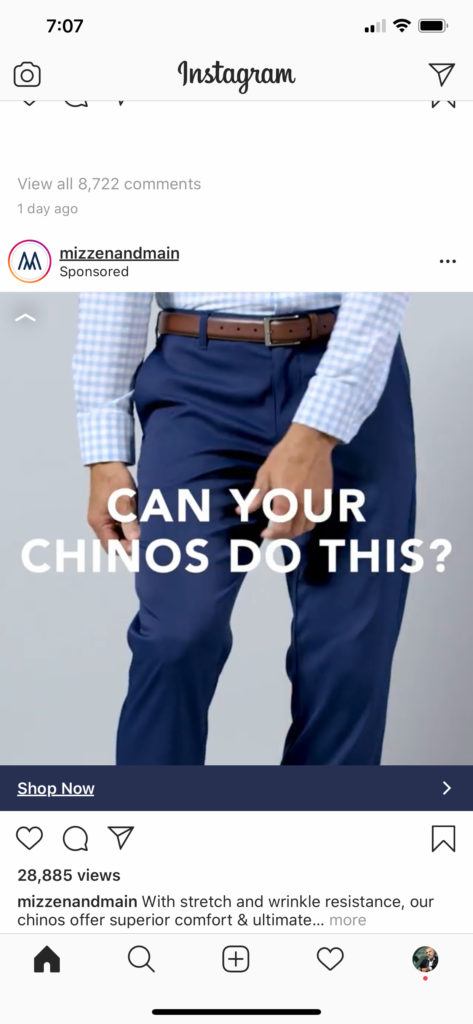
What do they all have in common, the chinos especially, that art is missing?
They are impulse purchases.
You might actually be flicking your thumb up and down, decide you need this useless item, and pull the trigger. Not how it goes with art.
2) You are just getting started
You don't have a huge list of past customers to start with, or a big email list, a ton of purchases FB has tracked, lots of web traffic, etc. So you are gonna struggle with finding a winning cold audience to go after and especially if you don't have a niche that has a built in community that is easy to target; i.e you paint Rottweilers and you target Rottweiler lovers.
3) Your margins are likely not big enough
What are you selling.. prints? Perhaps you also have some originals?
Ok great. Chances are though, your margins coupled with how art sells online are not likely high enough to make FB cold ads pay.
Art is often a one-off sale. Not like you have a subscription models (your art for $39.99 per month), or a super high volume of purchases (150+ pieces a month), repeat purchases coming in on the regular (customers coming back to buy their 2nd, 3rd, 4th pieces all in a short period of time).
All of which are what you need to achieve a high ROI from COLD traffic.
4) Your funnel is not sophisticated enough
Part of this is AOV, your average order value. Yours is likely not big enough to justify going after cold traffic.
Another part is a properly diversified catalog of offerings and price points and different items. How many items and price points do you have in your store? From entry level to insanely expensive and everything in between? With a huge spread of price points, you'll convert more cold traffic to customers - without it, you'll struggle.
Another part is your post-purchase activities: do you have a system in place to convert an original buyer into a custom commission? Do you upsell your buyers on a full series of prints after they've purchased 1? These are key ways to continue to boost ROI on your ad spend even after you've earned the big first sale.
Another part of this is follow-up marketing. Do you even have any in place? Is it automated? Does it scale? Are you emailing me and following up all the time? What about your warm audience targeting and re-marketing? After I leave your website, do your ads follow me around the internet, nudging me back to your site?
And yet another of this is your consistency in your marketing. If cold traffic is running you can't afford to fall off for 3 months.
All of this is totally overwhelming, and that's totally okay.
In most cases, artists are solo-prenuers. They don't have a staff of digital experts that are helping them build out this type of sophisticated eCommerce operation and that is totally A-OK.
Are some of these generalizations... sure, but I stand by the fact that starting with cold in either way - the "wrong way" OR the "right waY" is setting yourself up for failure.
Don't misunderstand.
You can make it using the wrong way or the right way, but the number who do is really small in my experience and they often have unique circumstances that stack the deck in their favor that other artists do not.
Generally speaking though, for most artists and photogs out there you are just getting started on Facebook Ads.
So let's finally get to MY way and let's stack that deck in your favor.
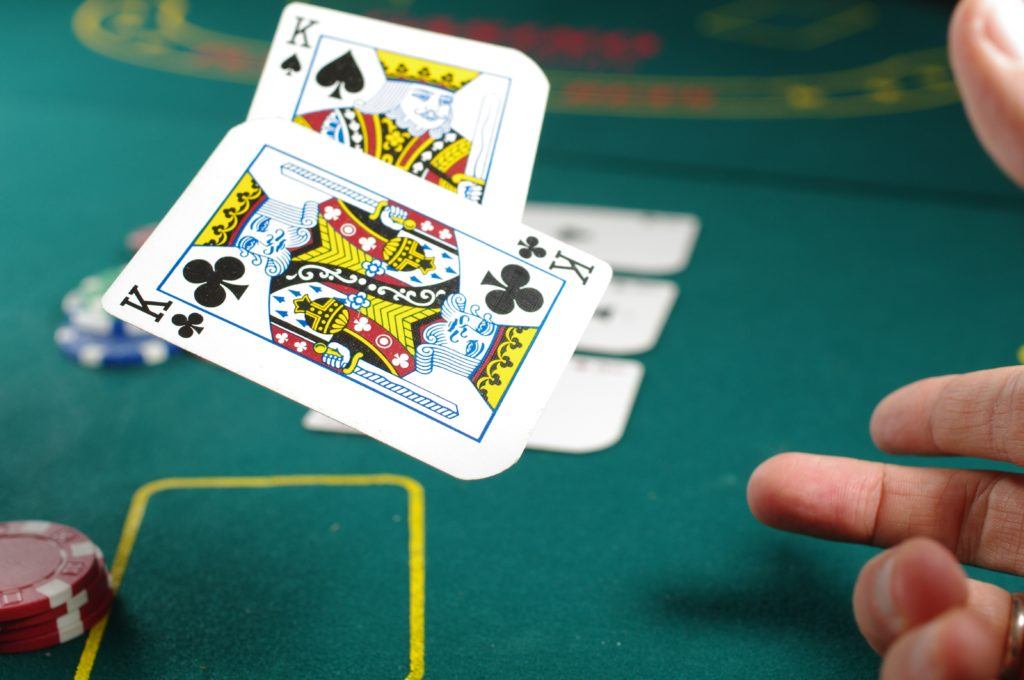
Pocket Kings. A good hand to start with.
My Way
My way starts with a piece of content - this can be as simple as an email or a blog post. Important part here is that it's not a hardcore sales pitch. In fact, it shouldn't have any sales language in it whatsoever.
Here it is - the way that actually works:
- You email this piece of content to your list.
- You create a Facebook post for it.
- You turn that post into an ad.
- The ad has a daily budget that you're comfortable spending. It goes out to at least Facebook, but ideally Instagram as well.
- For the audience you target WARM traffic ... i.e people that have already interacted with your brand in the past.
- The big picture goal is to capture attention in the form of new email subscribers, website traffic, and social followers.
- You do this process consistently all year long with new pieces of content.
- When it does come time for the sales (like, say, in the fourth quarter) you hammer this audience with ads that are explicitly asking for the sale.
That's it. That is what I believe to be the most effective way to sell art online and off using paid advertising.
Best part is it's pretty easy to do and execute on.
Let's talk about why this actually works:
It's how art is best sold online - you build attention through content that helps your audience fall in love with your work. Then, when the time is right later on down the line, you ask that attention for a sale.
By starting with warm traffic it forces you to learn how Facebook Ads work and get the hang of things before you go after the more costly cold traffic that others are wasting tons of money on.
In order for this strategy to work, it also forces you to create non-salsey content all year long. This is a big one. This is the karate kid. You are Daniel-san and this process is Mr. Miyagi. At first, you think Mr Miyagi is turning you into an indentured servant with this paint the fence, wax on wax off business.
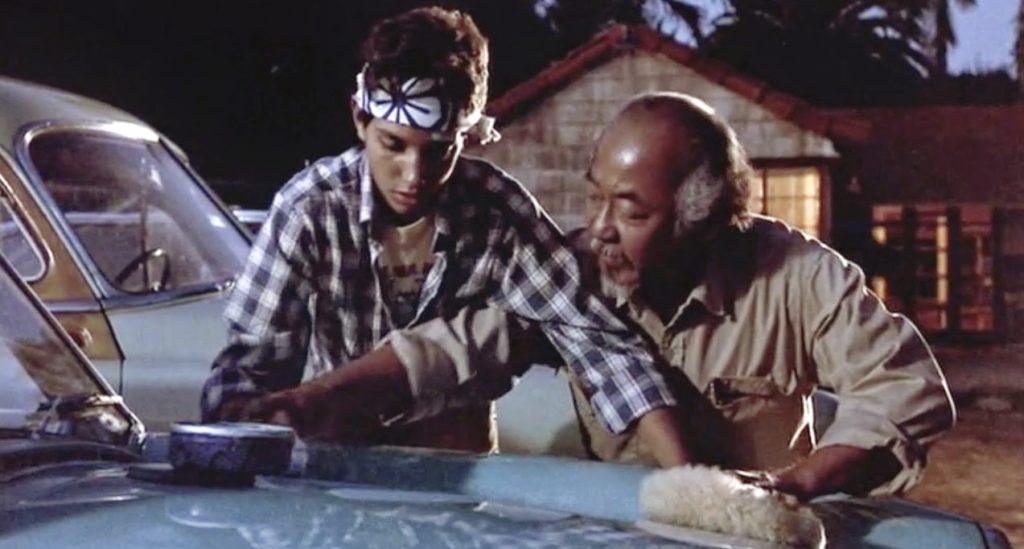
Turns out, Mr. Miyagi starts attacking: show me paint the fence, show me wax on wax off. All of the sudden you can fight. Stated another way you can market. By executing on this tactic it will force you to become a good and consistent marketer.
Finally, doing things this way forces you to learn how to market your art and grow your following. Which is why the consistency is so, so key.
If you can't excite, motivate and KEEP the attention of your warm traffic, you are never gonna be able to do so when you try cold traffic.
This system creates the demand that will turn your sales from where they have been into serious revenue opportunities.
This system will speed the creation of your lists – your website visitors, people that have opted into your email list, and yes customers too so that you can start making lookalike audiences to go after cold traffic.
Attention is hard to get and hard to keep. If you are gonna invest the time and creativity to create some content, you need people to see it. Email alone is not gonna get this done. So this solves for attention and helps you generate momentum.
The Chicken and Egg Problem
You may be thinking...if I'm just getting started, and no one is really familiar with my brand yet, how do I do this? I don't HAVE a warm audience yet.
In that case, you start with contests. Which I have covered on this podcast. Whether you do them with Messenger as I have covered or you do them conventionally I believe they offer the best online way to quickly build a warm audience you can then market to using the above strategy.
We have artists that start with zero emails on their list and zero social following and those numbers swell to the several hundreds with just one contest. Run a few of those and you can easily have an email list well north of a thousand people.
So if you are in this boat that is where I would start. And if you're not, you should still be doing it. I believe 100% of artists regardless of the size of business should be running contests – several of them all year long. They just perform insanely well.
The Tactical
I have been having quite a few calls with Art Storefronts members lately.
Always a good idea to learn from the horses mouth as it were – what is the best way to teach thing tactically and specifically how to best make it approachable enough that people take action on the teaching.
What I have taken away from these calls, continues to inform the teaching. Specifically that in order to make it as approachable as possible, it's best to split these lessons up in the following fashion.
First, the bare minimum to get the marketing tactic in the water, later the advanced stuff after you have the hang of things.
So let's discuss what the bare minimum looks like, then we can talk about how we layer some additional tasks on top of the bare minimum to really get the most out of it.
You start with the bare minimum and get some confidence and then with some experience things that once looked complex become easy and you can add additional tasks on top of it.
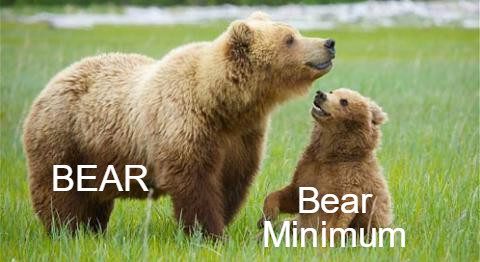
The Audience
When you are just starting, your warm audience will be the kitchen sink – everything you have in one big audience.
You start with your email list - upload them all to Facebook. Include all applicable information you have – first name, last name, city, state, zip country, life-time value if you have it.
Then you add in the website traffic you have via a Facebook Pixel.
You add anybody that has interacted with your Facebook Page, your videos, or your Instagram profile.
If you are on Messenger, you add in those subscribers too.
All of it goes in one audience.
The Conversion Objective
This one needs to be adjusted to taste pending on your audience size and how much traffic you are gonna be driving.
You might also have to play around with this a bit and test a bit on what gets you the best results.
Facebook wants an Ad Group to get 50 conversions per week in order to work its algorithmic magic. You are not likely to get 50 sales a week so that conversion objective is out.
Let's discuss the funnel quickly. Here's roughly how it looks for your business:
People like, comment, share your Facebook Ad
↓
They visit your website
↓
They stay on your website for longer than 10 seconds
↓
They opt-in to your email list
↓
They visit a product page
↓
They add an item to their cart
↓
They checkout!
Each of these items has its own conversion objective in the Facebook Ads Manager.
I recommend starting with email opt-ins to start, then you can move higher up the funnel if things are not going well.
Sadly, there is not a one-size-fits-all answer so I am gonna leave it there for now.
The Placements
The placements are the properties that Facebook owns that you can show ads on.
Given this is the bare minimum, you just choose all available placements and let FB take care of the rest.
The Content
For the content, resist the temptation to use sales-y language.
Tell a story, share a time lapse, give a news update, show your latest work, tease an upcoming show, whatever. As long as it's content and you are not asking for a sale it will do.
Ideally it's a piece of content that lives on your website (i.e.: a blog) and you tease and link to it in the ad, but it can also just be an email or the content can even live on Facebook or Instagram and you drive people there. You can also by all means mix it up throughout the year.
The Spend
$5 - $10 a day gets this done.
You can start at $5 per day and work your way up to $10 per day.
The Consistency
This is the whole ball game.
Not just doing this consistently, but also mentally spending the $ and planning for that.
You come to terms with the couple hundred dollars a month you are gonna spend on this. That $ is being invested into your business.
A good cadence or clip for this is 1 new piece of content (and ad) once a week, every week, all year long – to be replaced by the sales language when the time is right (ie: holidays).
That's it. That is the bare minimum.
The first round will be tough. Then you do it for a few weeks and you'll find you're getting the hang of it. Before long, you are able to execute on it quickly and easily, and it doesn't feel like much of an interruption to your week at all.
Then you'll take a look at the data and see it's performing - you are getting traffic and email sign-ups and bit by bit, slowly but steadily you are growing your audience and building more attention.

We are going up
The Next Level
Once you get comfortable with the bare minimum, it's time to look at leveling things up - adding more troops and armaments to the battle so to speak.
A few episodes back, I recorded a podcast on omni-channel marketing. Highly recommend you listen to that one. Gonna build on it here.
When you add omni-channel marketing on top of the bare minimum tactical described above, you're really cooking with gas. Here's how it works:
We take our weekly piece of content, we omni-channel market it, and we pour gas on the fire in the form of Facebook Ads.
There are a rather large number of creative variations you can do on this one. Tons of creative room to explore the space. So let me outline one example of what I am talking about and you can adjust yours to taste and what you have at your disposal.
Let's walk through it start to finish:
I have my content in the form of a blog post
↓
I email my list and then re-send to unopens two days later
↓
Omni-channel time. I create a Facebook post, an Instagram post, and an Instagram Story. I also blast my Messenger subscribers and change the announcement bar on my site to link to the content.
↓
Then I set up my ads. Same setup as the "bare minimum," but I split up Facebook and Instagram using the "Placements" setting and create unique ads formatted properly for each placement.
↓
If it all goes well and my audience seems to like the content, I create another Facebook post - a video this time - and turn it into a new ad on both Facebook and Instagram.
↓
I sit back and enjoy all the traffic and leads the system is generating for me
At this point, I've hammered every single channel I have at my disposal, I made FULL USE of the effort that went into creating that piece of content, and I spent my $10 per day on ads.
My content got a ton of attention. I dropped a bunch of new email addresses, got some messages from prospective customers, and grew my attention both rented and owned.
That is cooking with gas, that is effective marketing, that is how you get attention and keep it.
You do that all year long and your business will grow and your sales, when you have them, will do way way better than you even imagined possible.
If it sounds like a lot, the good news here is that you can take this whole process one step at a time.
Start with the bare minimum. Get comfortable with it. When you get comfortable with it, then just start adding one additional task each time you do it.
Before long, you will be running your ads at a level of sophistication you never dreamed of and that your competition isn't even approaching in terms of effectiveness.
And by the way, guess what process I'm going to recommend come fourth quarter? THIS ONE!
Where Does Cold Traffic Come In?
What happens as a result of this process is you start to build an audience. You are getting traffic to your website, you are building email subscribers, you are building purchases.
All of which you can leverage to build targeted lookalike audiences to start going after cold when you are ready - but in a targeted way.
Or, don't go after cold at all. You can run the warm process alone all year long and it's insanely effective.
With this process in place, you are now a WAY, WAY more sophisticated marketer across the board and you have a system in place to capture all of the attention you are building all year long and will be in place to continue nurturing them all year long.
Your warm audience gets updated on its own by FB. So the folks that visit your website, for whatever reason, or interact with your FB or IG page, are automatically placed into your warm audience and will see your new content week in and week out. They will start to build an emotional bond with you, your brand and your work, and they will be automatically moved closer to a purchase.
Perhaps better still. I am not gonna leave you hanging with just an explanation.
Nope.
I am gonna show you how to do everything described above in a step-by-step, in-depth video.
I use a real artist, his real content, his real ads account, and I run the whole thing start to finish.
Is that something you interested in watching? Good.

In it I will show you just how easy this whole process can be.
Perhaps most importantly it will completely break down and disarm the dreaded FB Ads Manager into something easy and smooth to operate.
Thanks again for listening reading and have a great day.
P.S. - Any and all episodes I mentioned in the podcast you will be able to find linked up below.
Brought To You By Art Storefronts
We help artists & photographers open and run their own art gallery business online.
Related Episodes
Here are episodes that dovetail with today's.
Recent Episodes
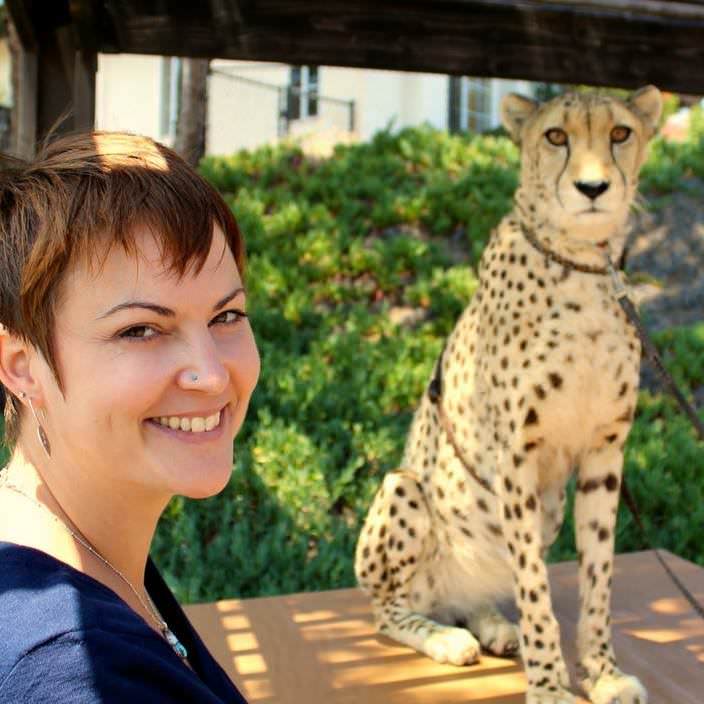
I have learned great tips about getting my art out there in the world.
Love this podcast. The episodes are to the point and give great value with none of the "fluff" that takes up unnecessary time.
Brought To You By Art Storefronts
We help artists & photographers open and run their own art gallery business online.


 and we will follow up in Messenger.
and we will follow up in Messenger. 


